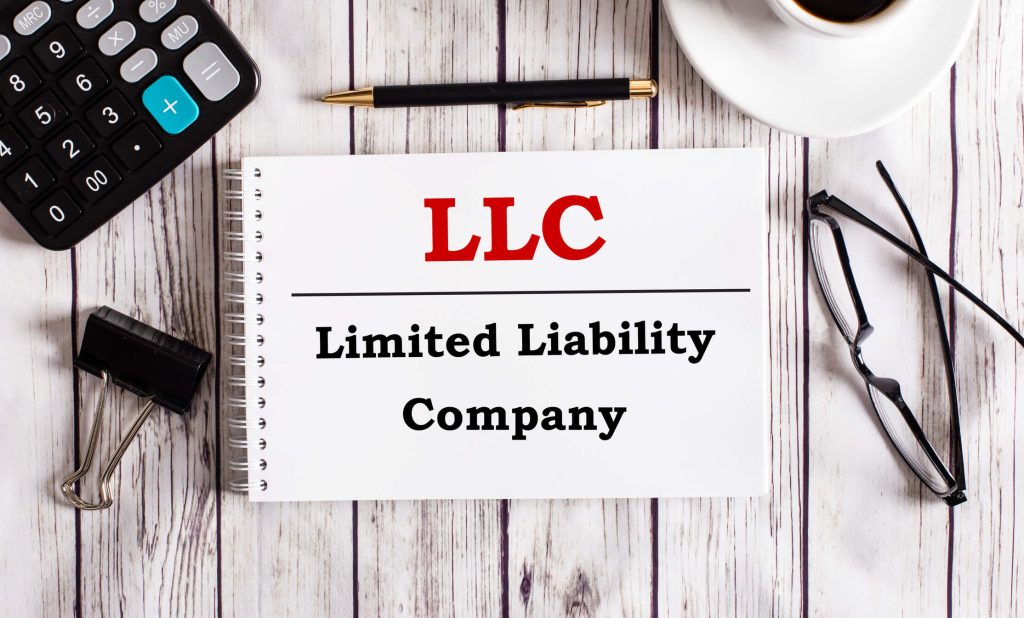
By admin April 11, 2024
When starting a fitness business, one of the most crucial decisions you will make is choosing the right business structure. The structure you select will have a significant impact on your business’s growth and success. It determines how your business is legally organized, how it is taxed, and the level of personal liability you may face. In this article, we will explore the different business structures for fitness businesses, factors to consider when making your decision, and provide industry statistics to highlight the importance of a solid business structure.
The significance of selecting the appropriate business structure
Choosing the right business structure is essential for several reasons. Firstly, it determines the legal and financial responsibilities you will have as a business owner. Different structures offer varying levels of personal liability protection, which can safeguard your personal assets in the event of a lawsuit or debt. Secondly, the structure you choose affects how your business is taxed. Some structures offer tax advantages, while others may result in higher tax obligations. Lastly, the structure you select can impact your ability to secure financing and attract investors. Lenders and investors often have preferences for certain business structures, and choosing the right one can increase your chances of obtaining funding.
How it impacts your fitness business’s growth and success
The business structure you choose can significantly impact the growth and success of your fitness business. For example, a sole proprietorship may be suitable for a small fitness studio with a single owner, but it may limit your ability to expand and take on partners. On the other hand, a corporation or limited liability company (LLC) offers more flexibility and scalability, allowing for growth and the addition of shareholders or members. Additionally, the structure you choose can affect your business’s reputation and credibility. Certain structures, such as corporations, may be perceived as more professional and trustworthy by clients and potential partners.
Exploring Different Business Structures for Fitness Businesses
Entrepreneurs are constantly seeking innovative business structures to stand out, cater to diverse clientele, and adapt to changing market trends. From traditional gym models to niche fitness studios and virtual platforms, let’s explore various business structures that are reshaping the fitness landscape and empowering entrepreneurs to thrive in the competitive market.
1. Sole proprietorship

A sole proprietorship is the simplest form of business structure, where an individual owns and operates the business on their own. There is no legal distinction between the owner and the business entity. Sole proprietorships are well-suited for independent fitness professionals, such as personal trainers or freelance instructors, looking to start small-scale operations with minimal regulatory requirements.
Pros
Easy and inexpensive to establish, requiring minimal paperwork and formalities. Complete control and decision-making authority rest with the owner. Simplified tax reporting, as business income and expenses are reported on the owner’s personal tax return.
Cons
Unlimited personal liability, meaning the owner is personally responsible for all business debts and obligations. Limited ability to raise capital or attract investors due to the sole proprietorship’s inherent structure.
2. Partnership

A partnership involves two or more individuals who share ownership, management responsibilities, and profits/losses of the business. Partnerships can be either general partnerships (where all partners share equally in liabilities and decision-making) or limited partnerships (where there are both general and limited partners).
Partnerships can be suitable for fitness businesses with multiple owners or collaborators, such as co-owned fitness studios or wellness centers, allowing partners to pool resources and share responsibilities.
Pros
Shared responsibility and resources among partners, allowing for complementary skills and expertise. Flexibility in decision-making and management structure, depending on the partnership agreement. Potential tax benefits, as profits are taxed at the individual partner level.
Cons
Joint and several liability, meaning each partner is personally liable for the actions and debts of the partnership, including those incurred by other partners. Disputes and conflicts may arise between partners over decision-making, profit sharing, and business direction.
3. Limited Liability Company (LLC)

An LLC is a hybrid business structure that combines the flexibility of a partnership with the limited liability protection of a corporation. Owners, known as members, enjoy limited personal liability for the debts and obligations of the business.
LLCs are well-suited for fitness businesses seeking liability protection for owners while maintaining flexibility in management and taxation, such as boutique fitness studios or wellness retreats.
Pros
Limited liability protection shields members’ personal assets from business liabilities. Flexible management structure and tax treatment, with options to be taxed as a disregarded entity, partnership, or corporation. Simplified administrative requirements compared to corporations.
Cons
Depending on the state, LLCs may have higher initial setup and ongoing maintenance costs than sole proprietorships or partnerships. Limited ability to issue stock or attract venture capital investors compared to corporations.
4. Corporation

A corporation is a separate legal entity owned by shareholders, with distinct rights and liabilities independent of its owners. Corporations can be structured as either C corporations or S corporations, each with its own tax implications and requirements.
Corporations are suitable for larger fitness businesses with growth ambitions, franchised gym chains, or publicly traded fitness companies seeking access to capital markets and investor funding.
Pros
Limited liability protection shields shareholders’ personal assets from corporate debts and liabilities. Ability to raise capital through the sale of stock and attract investors. Potential tax advantages, such as deducting employee benefits and expenses.
Cons
Formalities and regulatory requirements, including filing articles of incorporation, holding regular meetings, and complying with state corporate laws. Double taxation may occur at both the corporate level (profits) and individual level (dividends).
Factors to Consider When Choosing a Business Structure for Your Fitness Business
Whether you’re launching a personal training studio, yoga retreat center, or boutique fitness brand, one of the most critical decisions you’ll make is choosing the right business structure. This choice will not only shape your company’s legal and financial framework but also impact your liability, taxation, and ability to grow. Here are some essential factors to consider when selecting a business structure for your fitness venture:
1. Liability protection: Evaluating the level of personal liability you are comfortable with
Personal liability protection is a crucial factor to consider when choosing a business structure for your fitness business. If you are comfortable with assuming unlimited personal liability, a sole proprietorship or partnership may be suitable. However, if you want to protect your personal assets, an LLC or corporation may be a better choice.
2. Tax implications: Understanding the tax advantages and disadvantages of each structure
The tax implications of each business structure should also be carefully considered. Sole proprietorships and partnerships are pass-through entities, meaning that profits and losses are reported on the owner’s personal tax return. LLCs and corporations have more flexibility in terms of tax planning and may offer certain tax advantages, such as the ability to deduct business expenses.
3. Flexibility and scalability: Assessing the potential for growth and expansion
Consider the long-term goals of your fitness business and its potential for growth and expansion. Sole proprietorships and partnerships may be suitable for small, owner-operated fitness businesses. However, if you plan to expand, take on partners, or attract investors, an LLC or corporation may provide more flexibility and scalability.
4. Ownership and control: Determining the level of control you desire over your fitness business
Consider how much control you want to maintain over your fitness business. Sole proprietorships and partnerships offer complete control but may limit your ability to make decisions collectively. LLCs and corporations allow for shared ownership and decision-making, which can be beneficial if you plan to involve partners or shareholders.
Comparing Business Structures: A Comprehensive Analysis
To make an informed decision, it is essential to compare the different business structures side by side. Here is a comprehensive analysis of sole proprietorship, partnership, LLC, and corporation:
1. Sole proprietorship
- Simple and low-cost formation
- No personal liability protection
- Limited ability to raise capital and expand
2. Partnership
- Shared decision-making and resources
- Unlimited personal liability for each partner
- Potential conflicts and disagreements between partners
3. Limited Liability Company (LLC)
- Personal liability protection
- Tax advantages and flexibility
- More paperwork and higher formation costs
4. Corporation
- Highest level of personal liability protection
- Ability to attract investors through stock issuance
- More complex structure, legal requirements, and higher costs
Examining the legal requirements, paperwork, and costs associated with each structure is also crucial. Sole proprietorships and partnerships have minimal legal requirements and low formation costs. LLCs and corporations require more paperwork, such as articles of organization or incorporation, and may involve higher formation costs.
Analyzing the impact on personal assets, taxation, and decision-making authority is another important aspect to consider. Sole proprietorships and partnerships expose personal assets to liability, while LLCs and corporations offer personal liability protection. Taxation varies depending on the structure, with sole proprietorships and partnerships being pass-through entities, and LLCs and corporations having more flexibility in tax planning. Decision-making authority is determined by the structure, with sole proprietors having complete control, partnerships sharing decision-making, and LLCs and corporations allowing for shared ownership and decision-making.
Step-by-Step Guide: Choosing the Right Business Structure for Your Fitness Business
Starting a fitness business is an exciting venture, but one of the first crucial decisions you’ll face is choosing the right business structure. From sole proprietorships to partnerships and corporations, each structure comes with its own set of advantages and considerations. In this step-by-step guide, we’ll walk you through the process of selecting the optimal business structure for your fitness enterprise.
- Assess your fitness business’s unique needs and goals: Consider the size of your business, your growth plans, and the level of personal liability protection you desire.
- Consult with legal and financial professionals for expert advice: Seek guidance from professionals specializing in business structures for fitness businesses. They can provide valuable insights and help you understand the legal and financial implications of each structure.
- Weigh the pros and cons of each business structure based on your evaluation: Consider the advantages, disadvantages, and considerations for each structure, such as personal liability protection, taxation, flexibility, and scalability.
- Make an informed decision and take the necessary legal steps to establish your chosen structure: Once you have evaluated the options and considered professional advice, make a decision based on what aligns best with your fitness business’s needs and goals. Consult with an attorney or business formation service to ensure the proper legal steps are taken to establish your chosen structure.
Frequently Asked Questions
Q.1: What are the key differences between a sole proprietorship and an LLC for a fitness business?
The key differences between a sole proprietorship and an LLC for a fitness business lie in personal liability protection and taxation. A sole proprietorship offers no personal liability protection, meaning that the owner’s personal assets are at risk. On the other hand, an LLC provides personal liability protection, safeguarding personal assets from business liabilities. In terms of taxation, a sole proprietorship is a pass-through entity, with profits and losses reported on the owner’s personal tax return. An LLC offers more flexibility in tax planning, allowing for the possibility of electing corporate taxation.
Q.2: Can I convert my existing fitness business structure to a different one later on?
Yes, it is possible to convert your existing fitness business structure to a different one later on. However, the process and requirements for conversion vary depending on the structure and jurisdiction. It is advisable to consult with legal and financial professionals to ensure a smooth transition and to understand the legal and tax implications of the conversion.
Q.3: How does the choice of business structure affect my ability to secure financing for my fitness business?
The choice of business structure can significantly impact your ability to secure financing for your fitness business. Lenders and investors often have preferences for certain structures, as they offer varying levels of personal liability protection and potential for growth. For example, corporations and LLCs may be more attractive to lenders and investors due to their personal liability protection and ability to issue stock or membership interests. It is important to consider the financing options available for each structure and choose the one that aligns with your business’s financing needs.
Q.4: What are the tax advantages of incorporating my fitness business?
Incorporating your fitness business can offer several tax advantages. For example, corporations are subject to corporate tax rates, which may be lower than individual tax rates. Additionally, corporations can deduct certain business expenses, such as employee salaries and benefits, reducing their taxable income. However, it is important to consult with a tax professional to understand the specific tax advantages and requirements associated with incorporating your fitness business.
Conclusion
Choosing the right business structure is a critical decision that can significantly impact the growth and success of your fitness business. It determines your legal and financial responsibilities, tax obligations, and level of personal liability protection. By understanding the significance of selecting the appropriate structure, exploring the different options available, and considering factors such as liability protection, tax implications, flexibility, and scalability, you can make an informed decision that aligns with your fitness business’s unique needs and goals.
Industry statistics highlight the importance of a solid business structure, with fitness businesses structured as corporations and LLCs having higher survival rates and greater access to financing. Case studies and interviews with successful fitness entrepreneurs provide real-life examples of how different structures can impact growth and success. By carefully considering your fitness business’s unique needs, consulting with professionals, and learning from the experiences of others, you can make the right choice for your fitness business’s future.